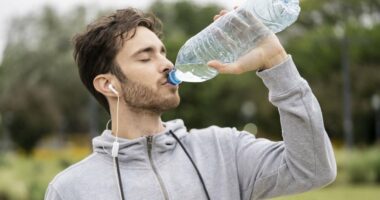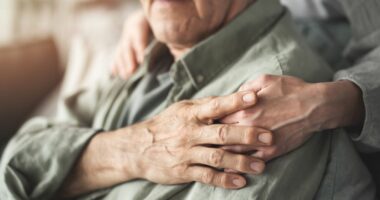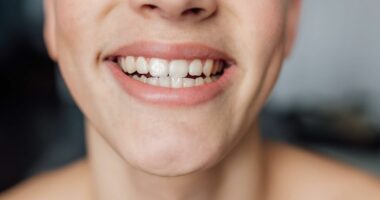Share this @internewscast.com
Have you ever noticed small bumps on the backs of your arms? It could be that you have a skin condition known as keratosis pilaris (KP).
Also referred to as ‘chicken skin’, it’s very common and harmless, but can last a long time, which some people may find frustrating. Luckily, there are treatments available to improve the appearance.
So what causes KP?
Dr James O’Donovan, a UK-based doctor, issued advice on his YouTube channel. He said: “It’s typically seen in children and young adults, and it is harmless. It affects almost half of teenagers and up to four in 10 adults.”
The term keratosis means there’s too much keratin, which is the protein that protects skin from infections and other harmful things. Pilaris comes from the latin word for hair, known as pilus.
Dr O’Donovan explained: “In KP, lots of 1-2mm plugs can be seen blocking the hair follicles or hair roots on the upper and outer parts of the arms and thighs. This can look like goosebumps but it can be rough to touch.
“You might notice if you have KP it can get worse in winter than summer for various reasons including the skin getting dry during winter and the skin rubbing more against thick clothing.
“It can also be associated with other skin conditions, for example if you’ve got ectopic eczema, you may also find you’re more likely to have KP.”
How do you know if you have KP?
Typically the skin feels rough, dry and appears although it’s got permanent goosebumps, advised Dr O’Donovan. It can occasionally be itchy too.
He added: “The groups of small bumps are most common on the backs of the upper arms and on the fronts of the thighs.
“Keratosis pilaris can also affect the buttocks, the lower back and chest and in less common forms the face and eyebrows as well.
“You may also notice some redness appearing around the small bumps, but again this is going to depend on your skin type.”
How to treat KP
KP can’t be cured or prevented, but can be treated with moisturisers and prescription creams to help improve how the skin looks.
Dr O’Donovan also recommended some things to try at home:
1. Moisturise your skin – ask a pharmacist what’s most suitable for you
2. Use mild and unperfumed soaps and bathing products
3. Gently scrub your skin with a washcloth or exfoliating mitt
4. Have cool or lukewarm showers and baths
5. Pat your skin dry instead of rubbing it after washing













